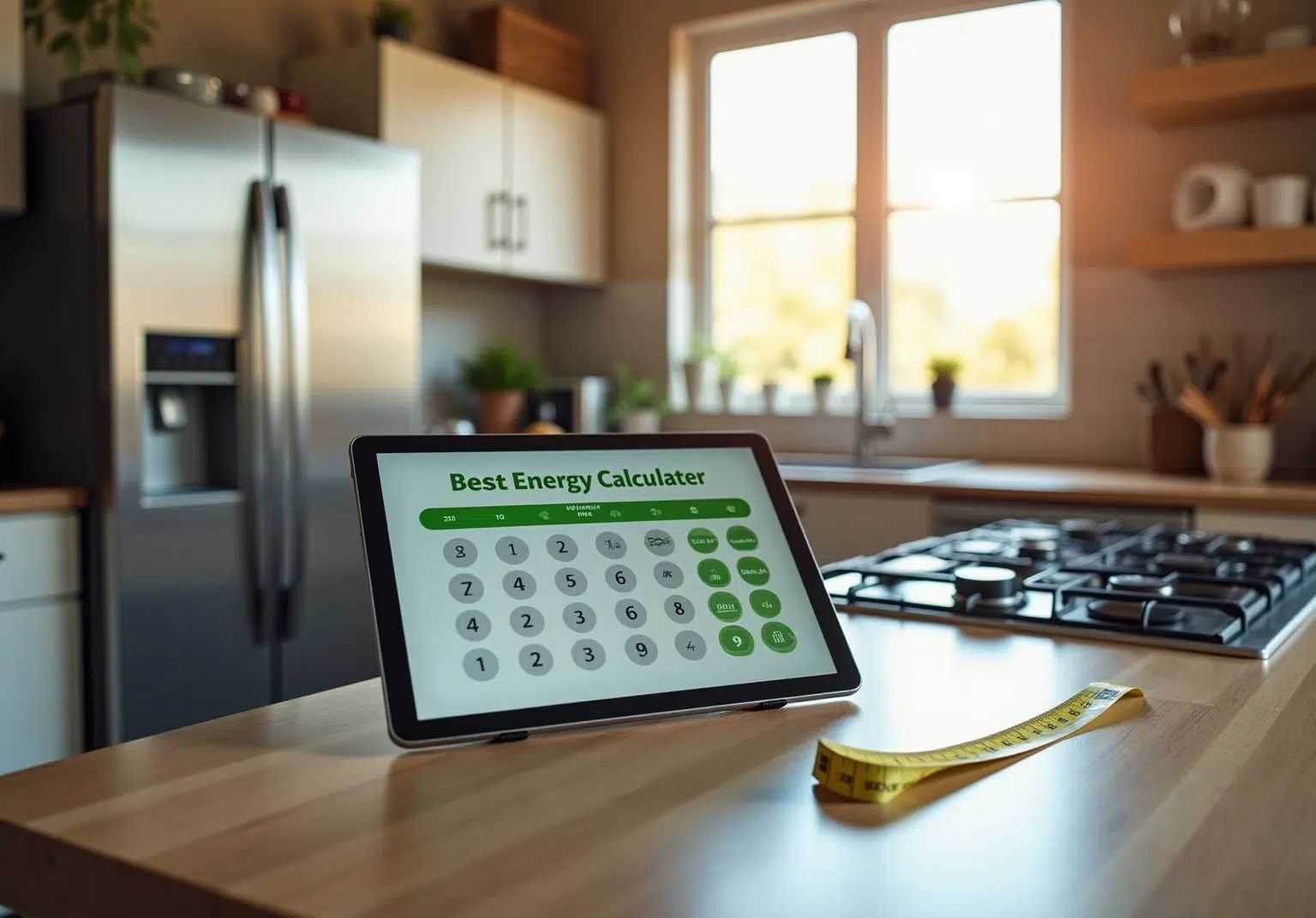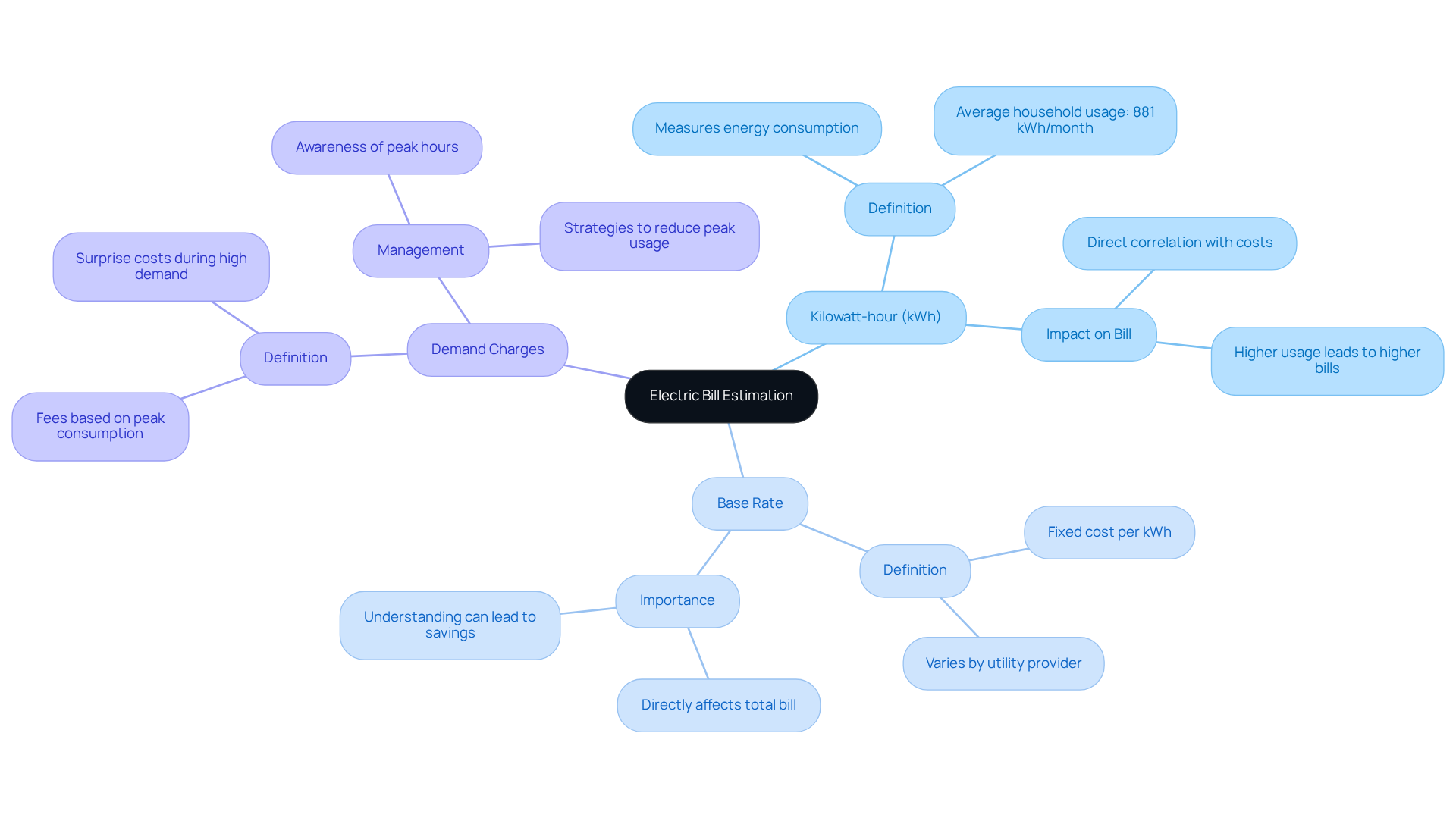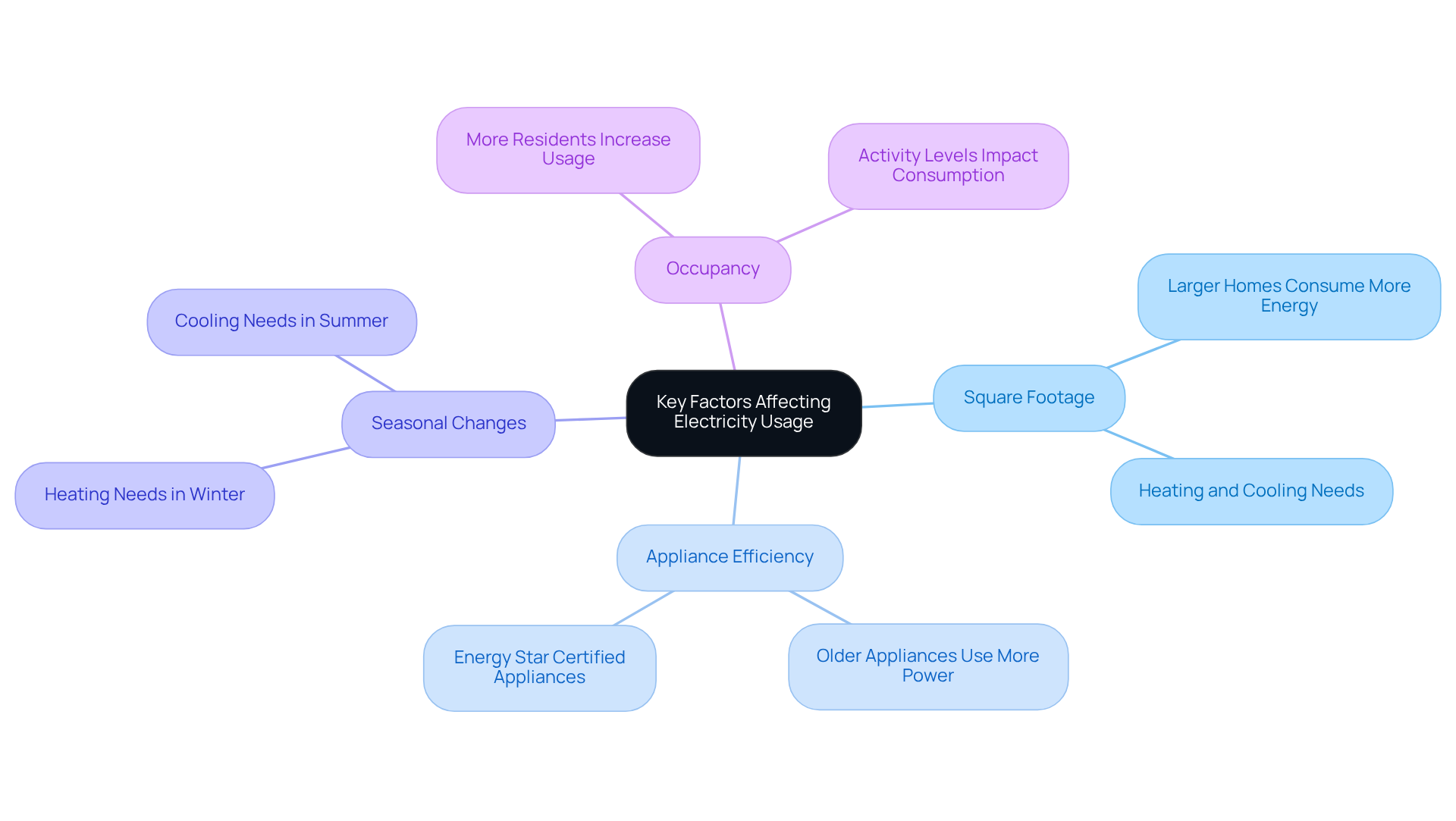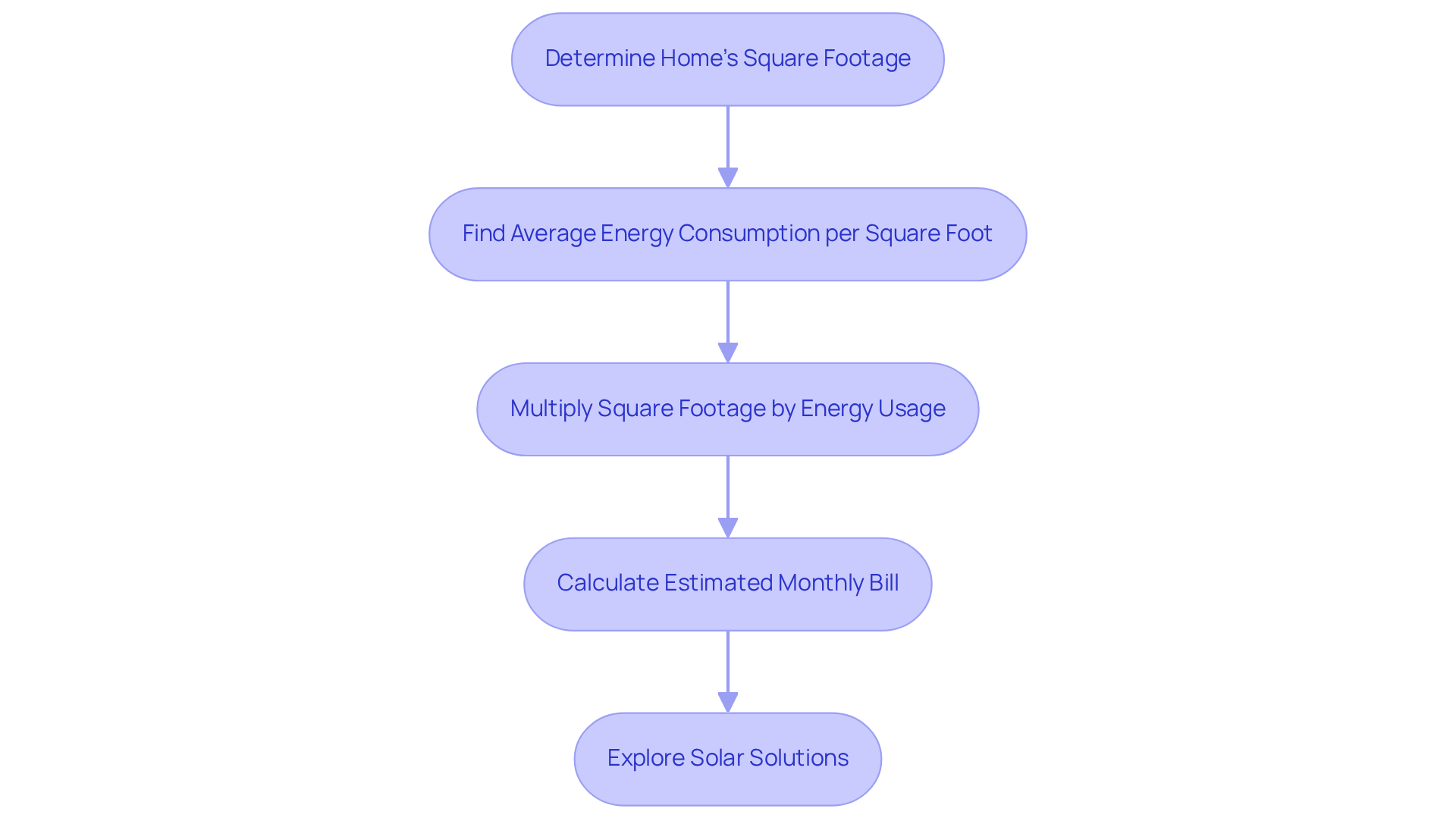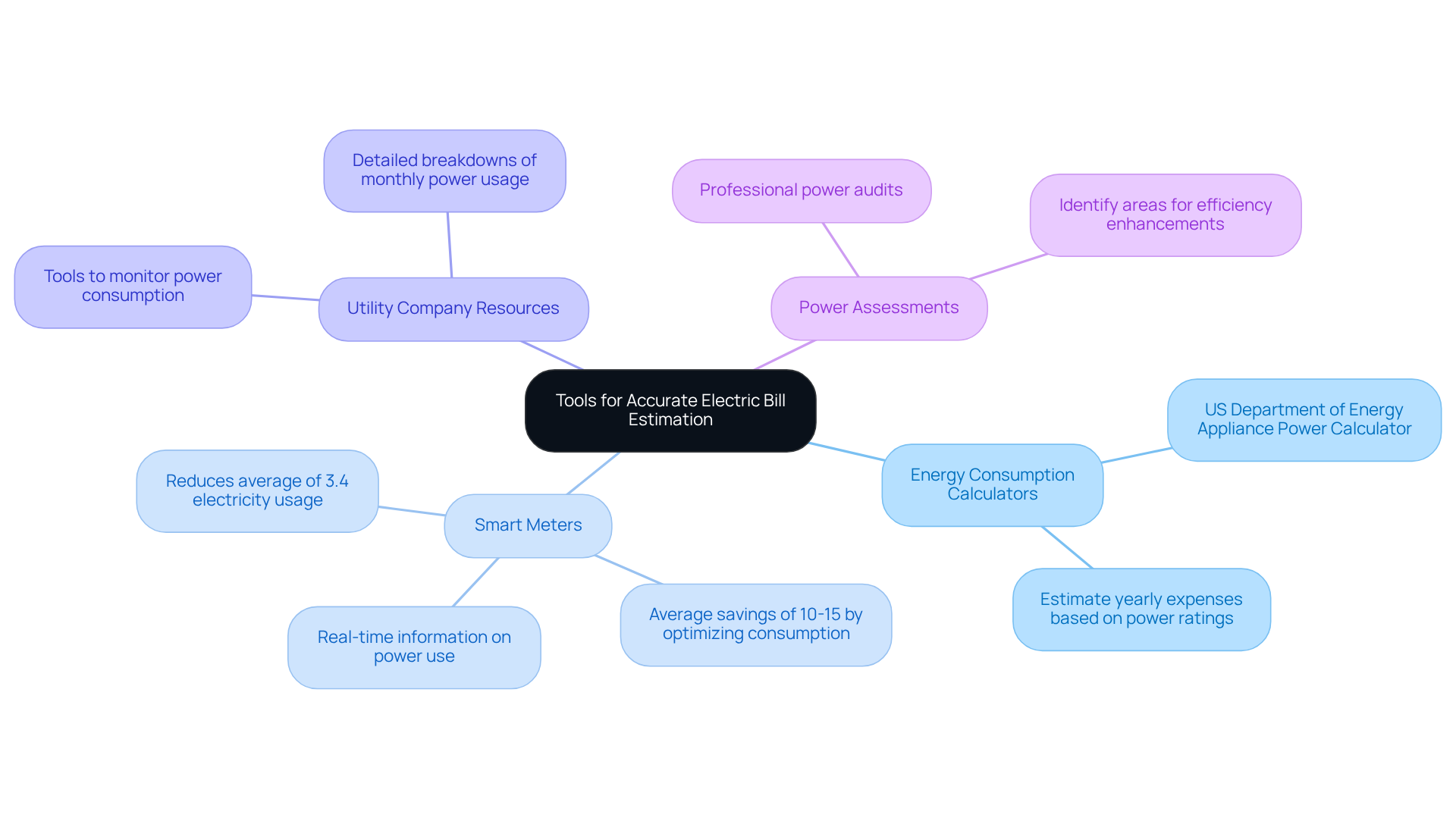Overview
Estimating your electric bill by square footage can feel overwhelming, but understanding this process is crucial for managing your home’s energy consumption effectively. By considering your home’s size, the efficiency of your appliances, and local utility rates, you can gain valuable insights into your monthly expenses.
We know that many homeowners worry about rising energy costs, and that’s why this article provides a step-by-step guide. We emphasize the importance of understanding kilowatt-hours and base rates, along with factors like seasonal changes, to help you make informed decisions.
Together, we can navigate these complexities and work towards a more sustainable future.
Introduction
Estimating electric bills can often feel like navigating a maze, and we understand how overwhelming this can be for homeowners trying to grasp how square footage impacts their expenses. By understanding the fundamental concepts behind utility charges, you can take control of your energy costs and make informed decisions about your consumption.
However, it’s common to feel uncertain with so many variables at play—from the size of your home to the efficiency of your appliances. How can you accurately predict what your monthly bill will look like?
This guide delves into the essential steps and tools necessary for estimating electric bills based on square footage, empowering you to tackle your energy expenses with confidence. Together, we can navigate this journey towards energy independence and sustainable solutions.
Understand the Basics of Electric Bill Estimation
Estimating your electric bill by square footage can be daunting, but understanding how utility companies determine charges is the first step toward gaining control over your expenses. Your bill is primarily based on the kilowatt-hours (kWh) consumed during a billing cycle. Let’s explore some essential terms that can help you navigate this process:
- Kilowatt-hour (kWh): This unit measures energy consumption, representing one kilowatt of power used for one hour. For context, the average household consumes about 881 kWh per month, which can lead to significant costs over time.
- Base Rate: This is the fixed cost per kWh charged by your utility provider. Understanding this rate is crucial, as it directly impacts your overall bill.
- Demand Charges: These are extra fees incurred based on the peak level of power consumption during high-demand periods. It’s common to feel surprised by increased fees if your household consumes a significant amount of power during peak hours.
By familiarizing yourself with these concepts, you can better estimate electric bill by square footage, which paves the way for more precise assessments of how your household’s power consumption translates into expenses. As electricity specialist Sam Wigness observes, “Electricity consumption is unique to each household based on climate conditions, the size of the home, the number of people in the household, and consumption habits.” This understanding is crucial for managing your utility costs effectively. Together, we can work towards a more sustainable energy future.
Identify Key Factors Affecting Electricity Usage
We understand that managing electricity usage can be a concern for many homeowners. Several factors can influence your electricity consumption, and recognizing these can empower you to make informed choices:
- Square Footage: Larger homes typically consume more energy due to increased heating, cooling, and lighting needs, which can impact your monthly bills.
- Appliance Efficiency: It’s common to find that older appliances may consume more power compared to newer, efficient models. Upgrading can lead to significant savings.
- Seasonal Changes: Your heating and cooling needs vary with the seasons, directly affecting overall usage. Being mindful of these shifts can help you adjust accordingly.
- Occupancy: More residents in a home often lead to greater power consumption due to increased activity and appliance use. Reflecting on your household dynamics can provide insights into your energy habits.
By taking these factors into account, you can gain a clearer understanding of your household’s power usage trends. Together, we can explore sustainable solutions that not only address your concerns but also pave the way for energy independence. Let’s work towards creating a more energy-efficient home, ensuring you feel supported every step of the way.
Calculate Your Estimated Electric Bill by Square Footage
It can feel overwhelming to estimate your electric bill by square footage of your home, but we’re here to guide you through it with care. Let’s take a step-by-step approach to help you understand this process better.
- Determine Your Home’s Square Footage: Start by measuring the total livable area of your home. Knowing this number is essential to estimate the electric bill by square footage accurately.
- Find Your Average Energy Consumption per Square Foot: Research local averages or consult your utility provider. In California, for instance, the average power usage is roughly 10-15 kWh per square foot each year. This can vary based on factors like climate and home size, so it’s important to consider your specific situation.
- To estimate electric bill by square footage, you should multiply your home’s square footage by the average energy usage per square foot. For example, if your home is 2,000 sq. ft. and the average is 12 kWh/sq. ft., your estimated annual usage would be 24,000 kWh.
- Calculate Your Estimated Monthly Bill: To find your monthly bill, multiply your annual consumption by your utility’s base rate. To estimate electric bill by square footage, if the average rate in California is around $0.30 per kWh, then 24,000 kWh x $0.30 equals $7,200 annually, or $600 monthly.
It’s common to feel concerned about these numbers, especially when considering that California’s average monthly electric bill is around $240. This reflects the higher utility costs in the state, and with the recent utility rate increase effective June 1, 2025, raising costs by over 15%, understanding these calculations is crucial for managing your budget effectively.
Moreover, together we can explore solar power solutions, which can significantly decrease or even eliminate these expenses. Investing in solar energy not only helps your wallet but also contributes to a more sustainable future. If you’re looking for guidance on how to make this transition, please reach out. We’re here to support you every step of the way.
Utilize Tools and Resources for Accurate Estimation
We understand that managing your electric bill can be a source of stress for many homeowners. To enhance the accuracy of your electric bill estimation and alleviate some of this burden, consider utilizing the following tools and resources:
- Energy Consumption Calculators: Online calculators allow you to input your square footage and appliance usage, yielding precise estimates of energy costs. For instance, the US Department of Energy offers an appliance power calculator that assists in estimating yearly expenses based on power ratings. We encourage you to check and record your appliances’ power ratings to better understand how your consumption is categorized.
- Smart Meters: If accessible, smart meters provide real-time information on power use, allowing you to recognize peak demand periods and modify your behaviors accordingly. Research shows that homes utilizing smart meters can achieve savings of 10-15% by optimizing their consumption. Furthermore, smart meters reduce an average of 3.4% of electricity usage, as evidenced by a meta-analysis.
- Utility Company Resources: Many utility suppliers offer tools and resources to help you monitor your power consumption and understand your billing framework. This can include detailed breakdowns of monthly power usage in kilowatt-hours, which is essential for precise budgeting.
- Power Assessments: Arranging a professional power audit can identify areas for efficiency enhancements, potentially resulting in substantial cost savings. These audits evaluate your home’s power consumption and suggest practical measures to improve efficiency. For example, the Mack family’s experience illustrates how tracking power consumption can lead to significant savings.
By leveraging these tools, you can gain a comprehensive understanding of your energy consumption patterns. Together, we can make more informed decisions regarding your electric bills, paving the way toward energy independence and a brighter, sustainable future.
Conclusion
Estimating your electric bill by square footage is not just a mathematical exercise; it’s an essential skill that empowers homeowners to take charge of their energy expenses. We understand that grappling with energy costs can be daunting, but by grasping the underlying concepts of kilowatt-hours, base rates, and demand charges, you can make informed decisions that lead to healthier budgets and more sustainable living practices.
Key factors such as:
- The size of your home
- Appliance efficiency
- Seasonal changes
- Occupancy levels
significantly influence electricity consumption. By understanding these elements, you can more accurately estimate your electric bill and pinpoint potential areas for improvement. The step-by-step calculation process, along with various tools and resources, provides a clear path to achieving more manageable energy costs.
Ultimately, the importance of estimating electric bills goes beyond mere calculations; it invites homeowners to embrace energy efficiency and consider sustainable alternatives like solar power. It’s common to feel overwhelmed, but by actively engaging with your energy consumption, you can not only save money but also contribute to a greener, more energy-independent future. Together, let’s take the time to learn and apply these estimation techniques as an essential step towards creating a more sustainable lifestyle and ensuring financial well-being.


